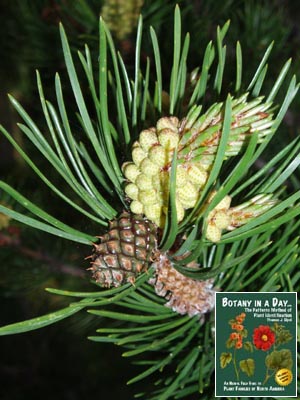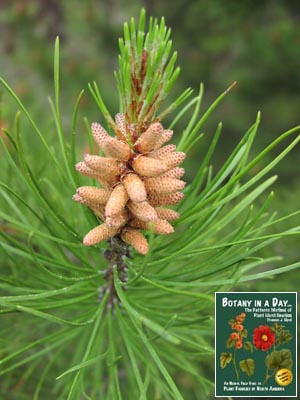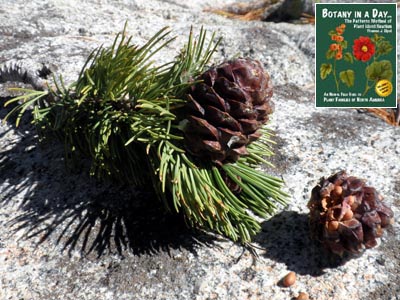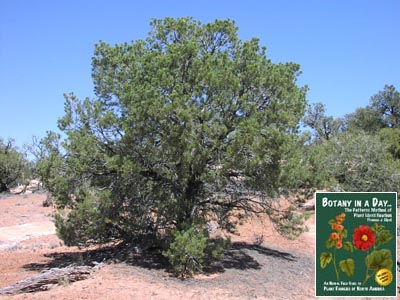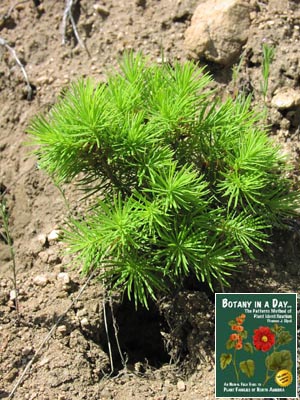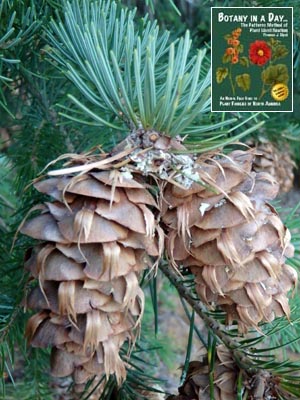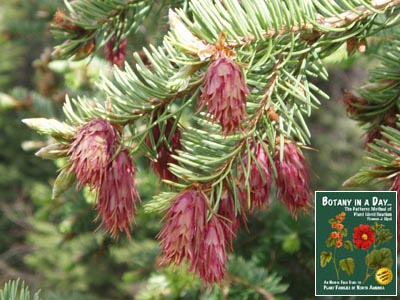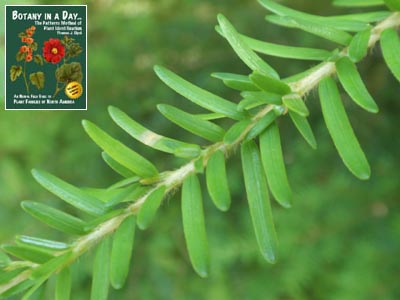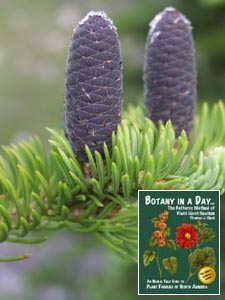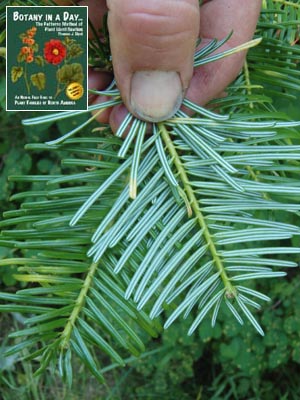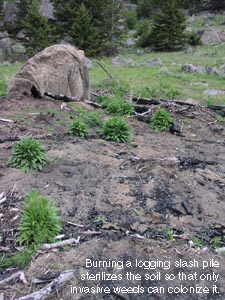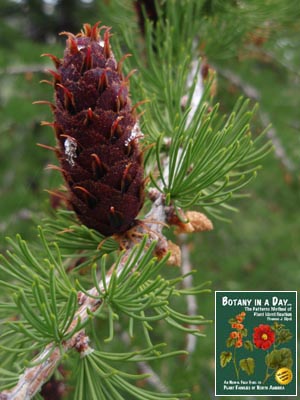| Thomas J. Elpel's Web World Portal  Wildflowers & Weeds |  


 Wildflowers-and-Weeds.com
Wildflowers-and-Weeds.com Plant Identification, Foraging, and Ecology with Thomas J. Elpel Home | Plant Identification | Plant Families Gallery | Edible Plants | Mushrooms | Links Desertification & Weed Ecology | Weed Profiles | Search this Site |
|
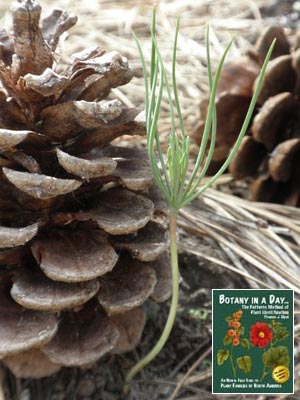
Pinaceae The Pine family are naked seed plants even though the seeds are highly protected under the scales of developing cones. The female cones briefly become elongated, exposing the ovules to the pollen in the wind. The shape of the cones causes air currents to swirl around them to help catch this pollen. The pollen and the cones are aerodynamically matched to each other, so each species captures its own pollen. After pollination, the scales grow rapidly and again cover the ovules, allowing them to mature into seeds. Primitive conifers first came into being about 300 million years ago, but most or all of them are extinct now. The Pine family as we know it originated about 100 million years ago. Worldwide there are 10 genera and 250 species. Our native genera are listed below. Amber is the fossilized pitch from this family. Please e-mail Thomas J. Elpel to report mistakes or to inquire about purchasing high resolution photos of these plants.
There are more
Return to the Plant Families Index |
|
Looking for life-changing resources? Check out these books by Thomas J. Elpel:
|
|
|

